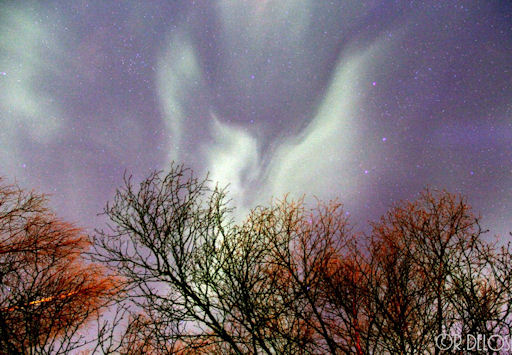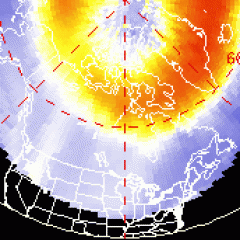~Space Weather Update~ Chance of X Class Flare's~ Wind Speed 668 [1]
CHANCE OF FLARES: Sunspot AR1465 has developed a 'beta-gamma-delta' magnetic field that harbors energy for X-class [2] solar flares. Because of the sunspot's location near the middle of the solar disk, any eruptions will likely be Earth-directed. Solar flare alerts: text [3], phone [4].
QUIETING STORM, MORE TO COME: Earth's magnetic field is quieting after two straight nights of mild to moderate geomagnetic storms. At the height of the disturbance on April 23-24, auroras were spotted in more than a dozen US states including Michigan [5], Nebraska [6], Kansas [7], Wisconsin [8], North Dakota [9], South Dakota [10], Iowa [11], Illinois [8], Minnesota [12], and Colorado [13]. On the threshold of the Arctic Circle in Anchorage, Alaska, the Northern Lights pierced the glow of the midnight sun:
"I didn't think I would get another glimpse of the auroras this season because of the increasing daylight," says photographer Ryan Delos Reyes, "but this was a spectacular show."
More auroras may be in the offing. A minor CME is en route to Earth, due to arrive on April 26th. NOAA forecasters estimate a 20% to 30% chance of geomagnetic storms. Aurora alerts: text [3], phone [4]
![]()

![]()
Solar wind
speed: 668.1 km/sec
density: 0.1 protons/cm3
explanation [15] | more data [16]
Updated: Today at 1635 UT
![]()
X-ray Solar Flares
6-hr max: C3 1215 UT Apr25
24-hr: C3 1215 UT Apr25
explanation [17] | more data [18]
Updated: Today at: 1600 UT
![]()
![]()
![]()
Daily Sun: 25 Apr 12
![]()
![]()
Sunspot 1465 has developed a "beta-gamma-delta" magnetic field that harbors energy for X-class [2] solar flares. Credit: SDO/HMI
![]()
![]()
![]()
Sunspot number: 169
What is the sunspot number? [20]
Updated 23 Apr 2012
Spotless Days
Current Stretch: 0 days
2012 total: 0 days (0%)
2011 total: 2 days (<1%)
2010 total: 51 days (14%)
2009 total: 260 days (71%)
Since 2004: 821 days
Typical Solar Min: 486 days
Updated 23 Apr 2012
The Radio Sun
10.7 cm flux: 142 sfu
explanation [21] | more data [22]
Updated 23 Apr 2012
![]()
![]()
![]()
Current Auroral Oval:
Switch to: Europe, USA, New Zealand, Antarctica
Credit: NOAA/POES
![]()
![]()
![]()
Planetary K-index
Now: Kp= 2 quiet
24-hr max: Kp= 5 storm
explanation [24] | more data [25]
![]()
Interplanetary Mag. Field
Btotal: 7.5 nT
Bz: 4.1 nT south
explanation [26] | more data [27]
Updated: Today at 1636 UT
![]()
![]()
![]()
Coronal Holes: 24 Apr 12
![]()
![]()
There are no large coronal holes on the Earthside of the sun. Credit: SDO/AIA.
Category:
- Ground Crew Updates [30]



